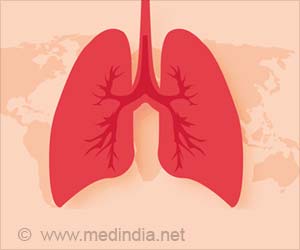India leads with 26% of global TB burden, highest globally: WHO report highlights urgent need for control.

Tuberculosis
Go to source). Globally, TB again emerged as the leading infectious disease killer in 2023, surpassing Covid-19. It showed that about 8.2 million people were newly diagnosed with TB in 2023 -- the highest number recorded since WHO began global TB monitoring in 1995. This also represents a notable increase from 7.5 million reported in 2022. The top infectious disease was found to be most common among men (55 percent). Women accounted for more than 30 percent, while 12 percent were children and young adolescents.
‘India tops the list of 30 high-burden countries in the 2024 Global #Tuberculosis Report. Alongside Indonesia, China, the Philippines, and Pakistan, these nations make up a staggering 56% of the global #TBburden. What does this mean for global health efforts? #EndTB ’





Ending the TB Crisis
“The fact that TB still kills and sickens so many people is an outrage, when we have the tools to prevent it, detect it and treat it,” said Dr. Tedros Adhanom Ghebreyesus, WHO Director-General, in the report. He called on countries to “make good on the concrete commitments they have made to expand the use of those tools, and to end TB”.Importantly, the report highlighted five major risk factors that are driving new TB cases. These include undernutrition, HIV infection, alcohol use disorders, smoking (especially among men), and diabetes.
“Tackling these issues, along with critical determinants like poverty and GDP per capita, requires coordinated multisectoral action,” said the report, while calling for increased funding for TB research.
Meanwhile, the report noted a decline in the gap between the estimated number of new TB cases and those reported. It narrowed to about 2.7 million, down from Covid pandemic levels of around 4 million in 2020 and 2021. While the coverage of TB preventive treatment has been sustained for people living with HIV, multidrug-resistant TB remains a public health crisis.
The report showed that treatment success rates for multidrug-resistant or rifampicin-resistant TB (MDR/RR-TB) have now reached 68 percent. But, of the 400 000 people estimated to have developed MDR/RR-TB, only 44 percent were diagnosed and treated in 2023, the report said.
Advertisement
- Tuberculosis - (https://www.who.int/india/health-topics/tuberculosis)
Source-IANS















